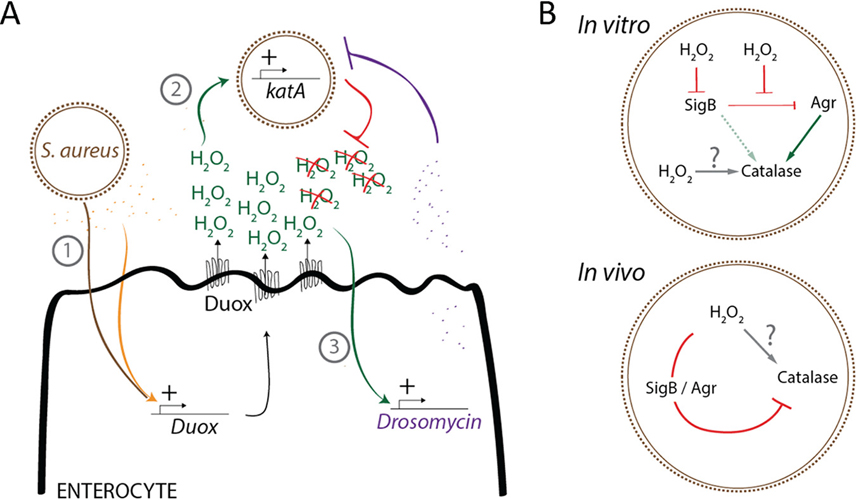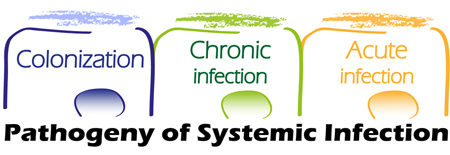23/06/2021 .
Reactive Oxygen Species-Dependent Innate Immune Mechanisms Control Methicillin-Resistant Staphylococcus aureus Virulence in the Drosophila Larval Model
Elodie Ramond et al mBIO 2021

MRSA Virulence in a new Drosophila Larval Model
Antibiotic-resistant Staphylococcus aureus strains constitute a major public health concern worldwide and are responsible for both health care- and community-associated infections. Here, we establish a robust and easy-to-implement model of oral S. aureus infection using Drosophila melanogaster larvae that allowed us to follow the fate of S. aureus at the whole-organism level as well as the host immune responses. Our study demonstrates that S. aureus infection triggers H2O2 production by the host via the Duox enzyme, thereby promoting antimicrobial peptide production through activation of the Toll pathway. Staphylococcal catalase mediates H2O2 neutralization, which not only promotes S. aureus survival but also minimizes the host antimicrobial response, hence reducing bacterial clearance in vivo. We show that while catalase expression is regulated in vitro by the accessory gene regulatory system (Agr) and the general stress response regulator sigma B (SigB), it no longer depends on these two master regulators in vivo. Finally, we confirm the versatility of this model by demonstrating the colonization and host stimulation capabilities of S. aureus strains belonging to different sequence types (CC8 and CC5) as well as of two other bacterial pathogens, Salmonella enterica serovar Typhimurium and Shigella flexneri. Thus, the Drosophila larva can be a general model to follow in vivo the innate host immune responses triggered during infection by human pathogens.
